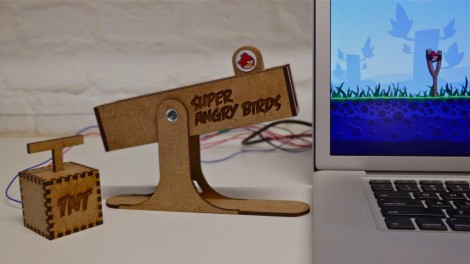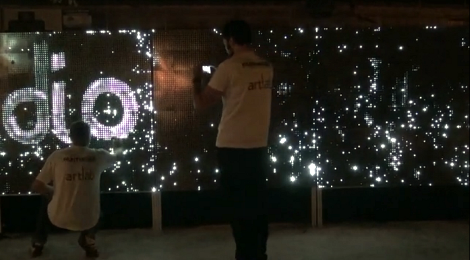
This role reversal is quite entertaining. While the game Angry Birds is a virtual realization of knocking over stuff with a sling-shot, Super Angry Birds adds a physical control element back to the virtual game. It’s silly, but well-executed. The main controller takes advantage a part which we don’t see used very often. It’s a motorized linear actuator which would most often be seen on a high-end audio console.
Check out the video after the break to see the controller in action. The linear encoder is used to simulate pulling the rubber sling shot back. It uses the motorized feature to spring back in place, but we’re not sure whether or not the motor also provides resistance during the pull. The laser cut case also includes a companion in the form of a TNT trigger box al-a Wile E Coyote.
If this isn’t real enough for you perhaps this slingshot controller will suffice.
Continue reading “Super Angry Birds Is A Physical Controller For The Game”
















